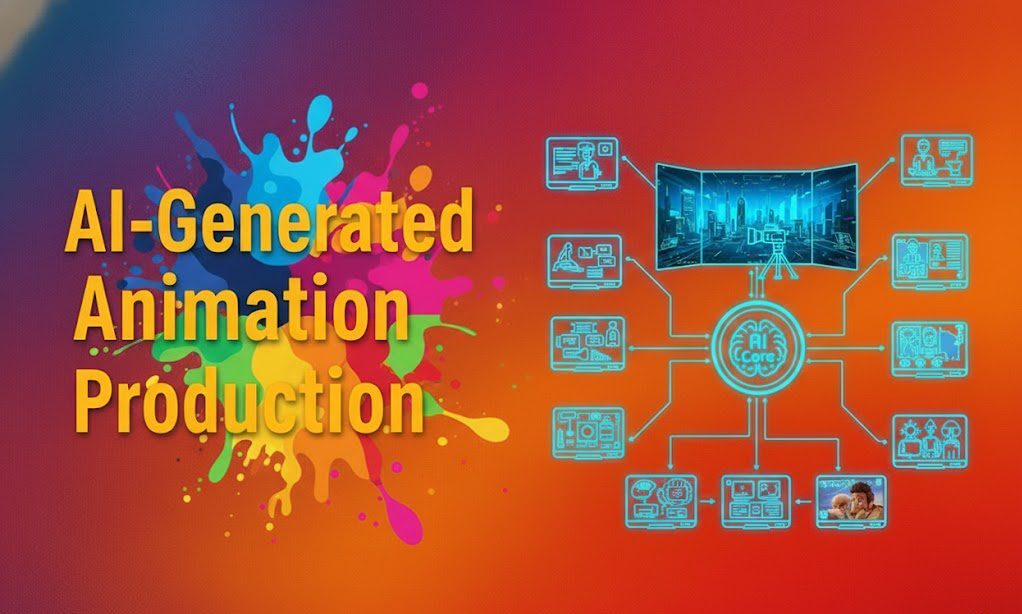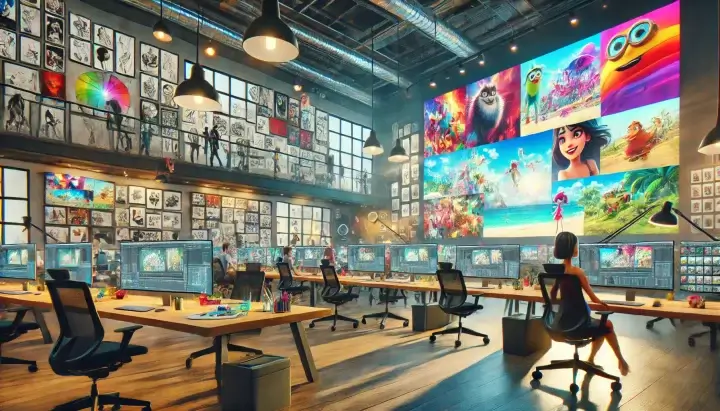Introduction
So, you have an incredible idea for an animated series or film. The characters are memorable, the story is compelling, but there’s one giant roadblock: money. If you’re struggling to figure out how to get funding for animation, you’re not alone. It’s the single biggest challenge producers face.
But here’s the good news. The game has changed. Gone are the days of relying on a single studio deal. Today, global streaming demand and diverse financing models have opened up a world of opportunity. You just need to know where to look and how to build a winning strategy.
In this post, I’m going to walk you through the five essential steps to secure funding for your animation project in today’s market. We’ll break down exactly what works, from finding co-production partners to leveraging tax credits, so you can turn your creative vision into a funded reality.
Table of content
Key Takeaways
| Strategy | What It Is | Best For |
|---|---|---|
| Global Co-Production | Partnering with international studios to share costs, risks, and creative input. | Projects with universal themes and appeal. |
| Tax Credits & Incentives | Government-backed rebates and grants offered by specific countries or regions. | Maximizing your budget and attracting partners to specific locations. |
| Pre-Sales & Commissions | Securing distribution or broadcast commitments from streamers or networks before production. | Producers with a strong track record or a highly marketable concept. |
| Equity Financing | Bringing on private investors who receive a share of ownership and future profits. | High-potential IPs that can generate significant long-term revenue. |
| Hybrid Models | Combining multiple funding sources (e.g., co-pro + tax credit + pre-sale). | Nearly all modern animation projects to close financing gaps. |
Is your animation pitch falling on deaf ears?

Step 1: Master the Modern Co-Production Deal
Let’s be direct. Going it alone is the hardest path. Co-production is no longer just a “nice-to-have”—it’s the primary way most independent animated projects get made today. Why? Because it splits the risk, expands your budget, and opens up new markets.
Instead of trying to raise a $5 million budget by yourself, you can partner with studios in two other countries, with each of you bringing a piece of the puzzle. This is the secret to getting ambitious projects off the ground.
How to Find the Right Co-Production Partner
Finding a partner isn’t about sending a thousand cold emails. It’s about strategic targeting.
- Look for creative alignment: Does their studio produce content in a similar genre or style? A partner who “gets” your vision is non-negotiable.
- Assess financial synergy: Focus on partners in regions with strong tax incentives or government funds you can access through the partnership. This is a huge selling point.
- Check their track record: Have they successfully co-produced before? You want a partner who understands the legal and logistical complexities.
You need to know who is actively seeking co-production deals right now. Market intelligence is your best friend here, as it helps you pinpoint potential partners who have a history of working on projects like yours. You can find this kind of deep industry data with a specialized M&E platform.
Step 2: Unlock “Free Money” with Tax Credits & Incentives
This is my favorite part because it feels like a cheat code. Many countries—like Canada, France, Ireland, and Belgium—offer huge financial incentives to attract animation production. We’re talking rebates of up to 30-40% of your qualifying production spend.
Think about that. If you spend $1 million on animation in a specific region, you could get $400,000 back. This isn’t just a discount; it’s a massive piece of your funding puzzle that makes your project infinitely more attractive to other investors.
Key Regions with Strong Animation Incentives
- Canada: A global animation hub with famously generous federal and provincial tax credits.
- France: Known for its strong government support for the arts and a robust animation industry.
- Ireland: Offers a compelling tax credit (Section 481) that attracts major international productions.
- Spain (Canary Islands): Provides one of the highest tax rebate percentages in the world, making it a hotspot.
The trick is that these incentives are constantly changing. You must stay on top of the latest policies to build a viable funding model. A project tracker can show you where similar productions are being made, giving you a real-world map of the most lucrative locations.
Step 3: Win Over Streamers & Broadcasters with Pre-Sales
A pre-sale is when a broadcaster or streaming platform agrees to license your show for their territory before it’s even finished. This is powerful because their commitment acts as a guarantee that you can take to a bank or other financiers to secure a loan.
Getting a pre-sale from a major player like a Netflix, Disney+, or a significant regional broadcaster de-risks the project for everyone else. It proves there’s a market for your IP.
How to Secure a Pre-Sale
You can’t just walk in and ask for money. You need a killer pitch package (more on that in Step 5), but you also need to know who to pitch to.
- Identify the right buyer: Don’t pitch your edgy adult comedy to a kids’ network. Research what content platforms are currently acquiring. Who are the commissioning editors? What have they bought recently?
- Leverage market data: Knowing what types of shows are trending on different platforms gives you a massive advantage. If you see a gap in the market for sci-fi animation that your show fills, lead with that data.
- Build relationships: The M&E industry runs on relationships. Attend markets, participate in forums, and connect with development executives. Be professional, persistent, but not pushy.
Ready to take your animation IP global?

Step 4: Explore Alternative Funding Routes
While co-productions and pre-sales are the bedrock of funding for animation, don’t ignore other powerful avenues. Diversifying your funding sources makes your project more resilient.
Top Alternative Funding Sources
- Equity Financing: This involves selling a percentage of your project’s ownership to private investors. It’s more complex and means giving up some control and future profits, but it can provide the large injection of capital needed to get started. Best for high-concept IPs with strong merchandising potential.
- Animation Grants & Public Funds: Organizations like the Creative Europe MEDIA Programme or national film funds offer grants that don’t need to be repaid. These are highly competitive but are a fantastic way to secure development or production funding.
- Crowdfunding: Platforms like Kickstarter or Indiegogo can be viable for projects with a built-in fanbase or a unique, niche appeal. A successful campaign not only raises money but also validates your audience and creates powerful buzz.
The key is to see these not as separate options, but as ingredients. The strongest funding plans often combine 2-3 of these sources into a hybrid model.
Step 5: Build Your Pitch-Perfect Funding Package
You can have the best funding strategy in the world, but if your pitch is weak, you won’t get anywhere. Your pitch package is your project’s business card, resume, and sales pitch all rolled into one. It must be professional, comprehensive, and compelling.
What to Include in Your Funding Package
| Element | Purpose |
|---|---|
| The Pitch Bible | The heart of your project. Includes concept, world, character designs, and episode synopses. It sells the creative vision. |
| The Script | A polished pilot script that proves your storytelling ability. |
| The Budget | A detailed, realistic budget that shows you understand the costs of production. Break it down by department. |
| The Finance Plan | This is crucial. It shows exactly how you plan to raise the money. (e.g., “30% from French tax credit, 40% from Canadian co-producer, 30% from pre-sale to a German broadcaster”). |
| The Team | Bios of the key creative and production talent attached. Investors bet on people as much as ideas. |
Your finance plan is where you connect all the dots. It shows potential partners that you’ve done your homework and have a clear, actionable roadmap to getting your project fully funded.
How Vitrina Accelerates Your Funding Search
Navigating this complex global landscape of co-producers, tax incentives, and VOD buyers can feel overwhelming. Guesswork leads to dead ends.
This is where Vitrina becomes a critical tool for producers. Our platform provides verified, real-time data on the entire global entertainment supply chain.
Instead of guessing who to pitch, you can use Vitrina to identify production companies with a history of co-production, discover which streamers are acquiring content in your genre, and find sales and distribution partners who operate in the territories you need to secure pre-sales.
It transforms your funding search from a game of chance into a data-driven strategy.
Conclusion
Securing funding for animation isn’t about luck; it’s about strategy. You need to think like a global entrepreneur. By mastering co-productions, leveraging tax credits, targeting the right buyers, and building a bulletproof pitch package, you can systematically de-risk your project and make it irresistible to partners.
It’s a lot of work, but the path is clearer than ever before for those who are prepared.
What’s the first strategy you’re going to try? Let me know in the comments.
Ready to stop guessing and start connecting with the right funding partners? Get the data and insights you need to finance your next project. Sign up for your Vitrina Membership today and get access to the global supply chain of entertainment.
Frequently Asked Questions
Today, the most common method is a hybrid model, anchored by an international co-production. This structure allows producers to pool resources and access multiple regional tax incentives and government funds, making it easier to close the full budget.
You don’t need the full production budget. However, you should aim to have some “soft money” secured or clearly identified, such as confirmed tax credit eligibility or development funds. This demonstrates viability and makes your project more attractive to larger investors and co-producers.
It’s extremely difficult. Financiers and partners need to see proof of concept. At a minimum, you need a strong pitch bible, a pilot script, and a preliminary budget. An animated teaser or “animatic” can also dramatically increase your chances.
Each country or region’s film commission or government arts council website is the official source. However, navigating and comparing them is complex. Using a professional service or a data platform like Vitrina helps you quickly identify and compare the most lucrative and relevant incentives for your specific project.




































